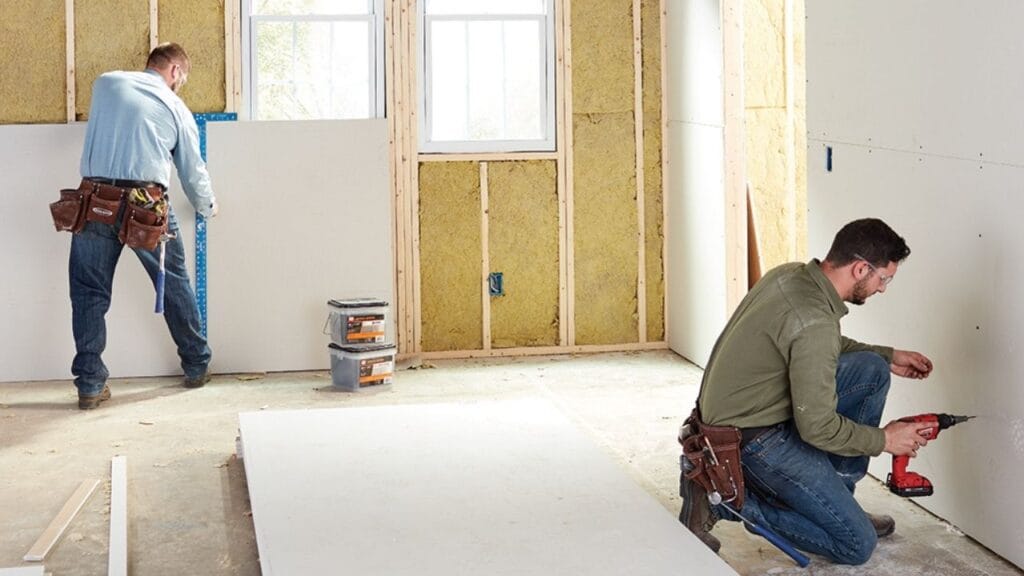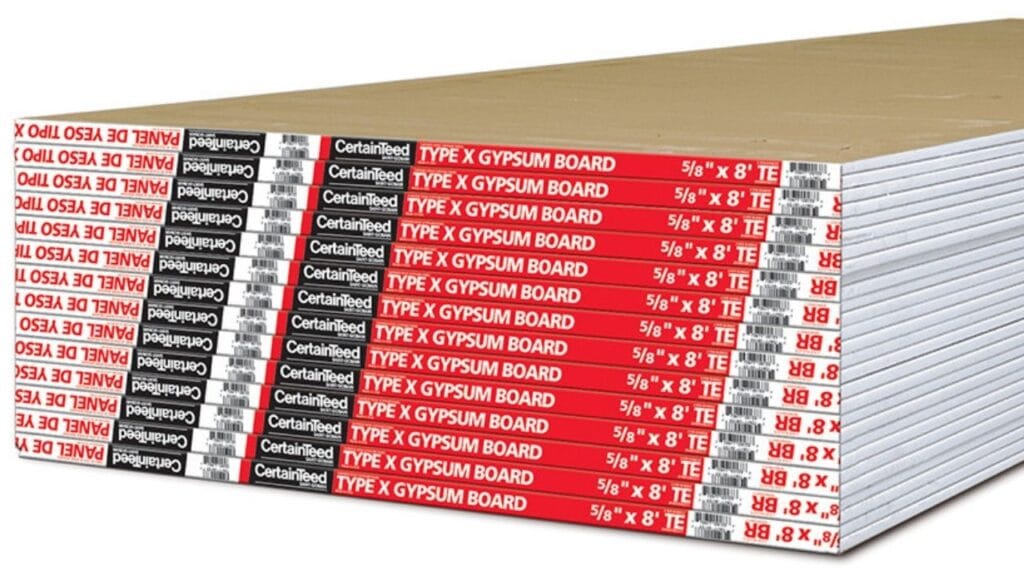How To Measure A Project For Drywall Installation?
To calculate your drywall measurements, first take the total square footage of the area and divide it by the square foot of your board size. If you are using a standard 4×8’ gypsum board, you will divide by 32, and if you are using a larger 4×12’ sheet size, divide by 48. If your construction estimating software has a digital takeoff tool, use it as this calculation will be more precise and account for various angles, insets, and openings in each wall area.
The simple square footage method will give you a measurement for your wall area, don’t forget to add the measurement of your ceiling, taking into account the pitch of any vaulted areas.

Fire Rating & Moisture Resistance
Each type of gypsum board or the drywall has a different level of both fire and moisture resistance. Depending on your project type and architectural specifications, your team needs to ensure that materials pricing is for the correct type of drywall. Prices for specialty drywall applications can vary widely, and some need more labor as well; a drywall estimator—or construction estimating software—should break these out for you to make bidding a drywall project faster.
Type X or Type C Drywall
Produced with specialty non-combustible fibers, Type X drywall is intended for areas that require a higher fire rating, such as a laboratory, manufacturing area, or garage. The American Society for Testing and Materials (ASTM) lists a fire-resistance rating of not less than one hour for 5⁄8” thick boards or 45 minutes for ½” boards. Type C drywall goes above and beyond the Type X standard, with a shrinkage-compensating additive. When this type of board is exposed to extreme heat, the board expands and provides more fire resistance around its edge, where it creates a seam.

Regular Drywall
Standard drywall boards are typically 3/8″ thick and 4X8′. If your project does not have any specific requirements like a bathroom, garage, or kitchen, then this is the drywall that should be in your construction bid. You can also consider larger boards, like 4×12’, to avoid additional seams, but also know that these larger boards will require an additional crew member to help hold them in place.
Paperless Drywall
An improved version of typical drywall is a paperless product made from fiberglass. This type of gypsum board is durable, moisture resistant, and easier to cut into irregular shapes. Some contractors find that additional mud or plaster is needed to get the smoothest finish, so take into consideration additional materials and labor costs when taking this route.
Moisture Resistant Drywall
Moisture resistant drywall, or green boards, has an outer paper covering that makes it the ideal material for humid areas like bathrooms or basements; however, cement board should be used for shower and bath surrounds. Its light-green coloring on one side will help you identify it and keep it separate from your regular drywall. Use purple board for an even higher level of water resistance, especially if the wall may have direct access with water, such as behind a kitchen sink.

